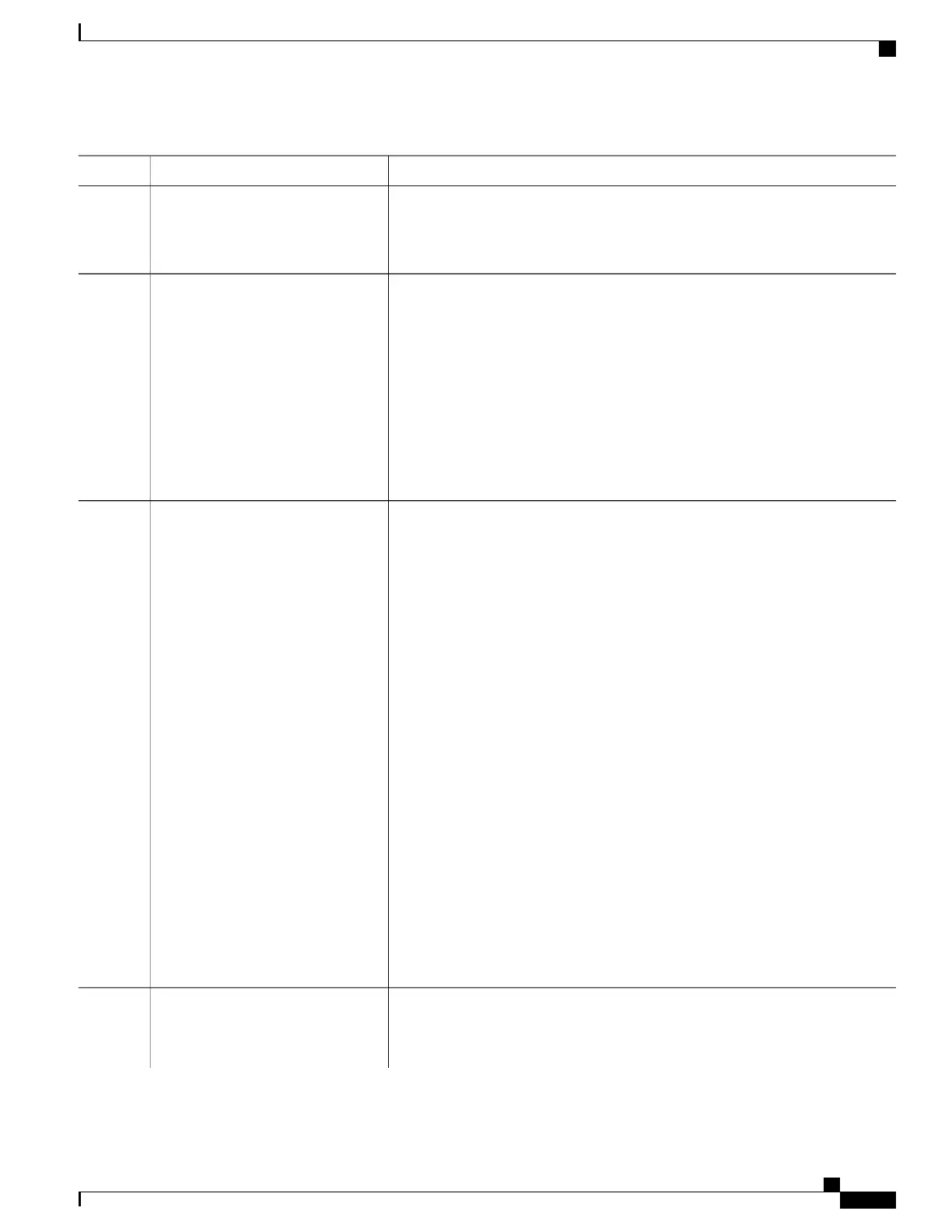PurposeCommand or Action
The default behavior of a policy map is to set the DSCP to 0 if the packet is an IP
packet and to set the CoS to 0 if the packet is tagged. No policing is performed.
flowit
To delete an existing policy map, use the no policy-map policy-map-name
global configuration command.
Note
Defines a traffic classification, and enters policy-map class configuration mode.
class [class-map-name | class-default]
Step 4
Example:
Switch(config-pmap)# class
By default, no policy map class-maps are defined.
If a traffic class has already been defined by using the class-map global
configuration command, specify its name for class-map-name in this command.
ipclass1
A class-default traffic class is pre-defined and can be added to any policy. It is
always placed at the end of a policy map. With an implied match any included in
the class-default class, all packets that have not already matched the other traffic
classes will match class-default.
To delete an existing class map, use the no class class-map-name
policy-map configuration command.
Note
Configures the trust state, which QoS uses to generate a CoS-based or DSCP-based
QoS label.
trust [cos | dscp | ip-precedence]
Example:
Switch(config-pmap-c)# trust
Step 5
This command is mutually exclusive with the set command within the same policy
map. If you enter the trust command, go to Step 6.
dscp
By default, the port is not trusted. If no keyword is specified when the command
is entered, the default is dscp.
The keywords have these meanings:
• cos—QoS derives the DSCP value by using the received or default port CoS
value and the CoS-to-DSCP map.
• dscp—QoS derives the DSCP value by using the DSCP value from the
ingress packet. For non-IP packets that are tagged, QoS derives the DSCP
value by using the received CoS value; for non-IP packets that are untagged,
QoS derives the DSCP value by using the default port CoS value. In either
case, the DSCP value is derived from the CoS-to-DSCP map.
• ip-precedence—QoS derives the DSCP value by using the IP precedence
value from the ingress packet and the IP-precedence-to-DSCP map. For
non-IP packets that are tagged, QoS derives the DSCP value by using the
received CoS value; for non-IP packets that are untagged, QoS derives the
DSCP value by using the default port CoS value. In either case, the DSCP
value is derived from the CoS-to-DSCP map.
To return to the untrusted state, use the no trust policy-map configuration
command
Note
Classifies IP traffic by setting a new value in the packet.
set {dscp new-dscp | ip precedence
new-precedence}
Step 6
•
For dscp new-dscp, enter a new DSCP value to be assigned to the classified
traffic. The range is 0 to 63.
Consolidated Platform Configuration Guide, Cisco IOS Release 15.2(4)E (Catalyst 2960-X Switches)
599
How to Configure QoS

